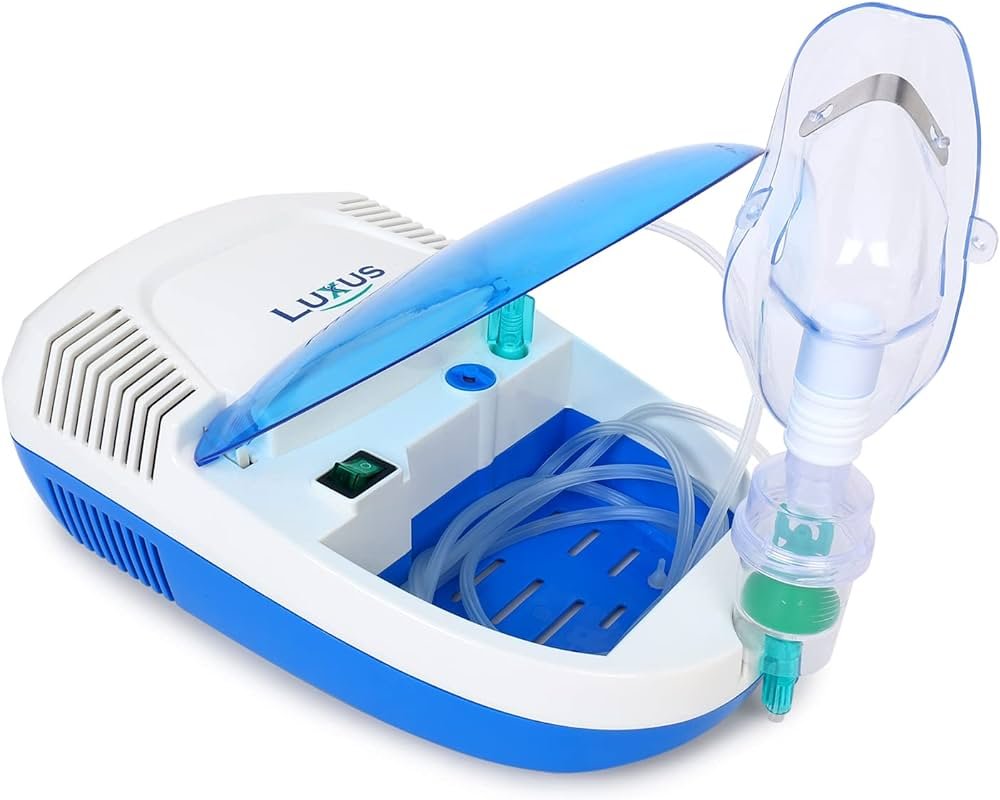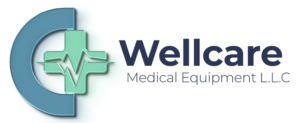Wave Farewell to Wheezing! Say Goodbye to Wheezing with These Simple Yet Powerful Nebulizer Tips

Introduction
Living with wheezing can be a daunting experience, turning simple tasks into challenging feats. However, with the right knowledge and tools, managing wheezing becomes significantly more manageable. This article delves into the world of nebulizers, offering you comprehensive insights and practical tips to help you breathe easier and say goodbye to wheezing for good.
Understanding Wheezing
What is Wheezing?
Wheezing is a high-pitched whistling sound made while breathing, commonly occurring when the airways are narrowed or obstructed. It can be a symptom of various respiratory conditions, including asthma, chronic obstructive pulmonary disease (COPD), and bronchitis. Recognizing wheezing is the first step towards effective management.
Common Causes of Wheezing
Wheezing can be triggered by multiple factors, such as respiratory infections, allergens, exercise, and environmental irritants like smoke or pollution. Understanding the root cause of your wheezing can guide you in choosing the most effective treatment and prevention strategies.
Impact of Wheezing on Daily Life
Persistent wheezing can significantly affect your quality of life. It may lead to difficulty in performing physical activities, interrupted sleep, and overall discomfort. Chronic wheezing can also cause anxiety and stress, further exacerbating respiratory issues.
The Role of Nebulizers in Managing Wheezing
How Nebulizers Work
Nebulizers transform liquid medication into a fine mist, making it easier to inhale directly into the lungs. This method ensures that the medication is delivered efficiently to the airways, providing rapid relief from wheezing and other respiratory symptoms.
Types of Medications Used in Nebulizers
Common medications used in nebulizers include bronchodilators, corticosteroids, and antibiotics. Bronchodilators help relax and open the airways, corticosteroids reduce inflammation, and antibiotics treat bacterial infections. Your healthcare provider will prescribe the appropriate medication based on your specific condition.
Benefits of Nebulizer Treatments for Wheezing
Nebulizer treatments offer several advantages, including targeted delivery of medication, quick relief, and ease of use, especially for children and elderly patients. They are particularly beneficial during acute wheezing episodes, providing prompt alleviation of symptoms.
Choosing the Right Nebulizer
Types of Nebulizers: Jet, Ultrasonic, Mesh
– Jet Nebulizers: These are the most common and use compressed air to turn medication into a mist.
– Ultrasonic Nebulizers: Utilize ultrasonic waves to create a fine mist, often quieter and faster than jet nebulizers.
– Mesh Nebulizers: Employ a vibrating mesh to produce a consistent mist, offering portability and efficiency.
Key Features to Look For
When selecting a nebulizer, consider factors like portability, noise level, ease of use, and cleaning requirements. Look for features such as adjustable airflow, battery operation for travel, and durable construction.
Best Nebulizers for Adults and Children
For adults, lightweight and compact nebulizers are ideal for home and travel use. For children, choose nebulizers with child-friendly designs, such as colorful models or those with animal shapes, to make the treatment process less intimidating.
Preparing for Nebulizer Use
Setting Up Your Nebulizer
Start by assembling the nebulizer according to the manufacturer’s instructions. Ensure all components are clean and dry. Connect the tubing to the compressor and the nebulizer cup.
Essential Supplies You’ll Need
You’ll need the nebulizer machine, medication, nebulizer cup, mouthpiece or mask, and tubing. It’s also helpful to have a clean cloth or tissue for wiping down the equipment after use.
Proper Storage and Maintenance
Store your nebulizer in a clean, dry place away from dust and moisture. Regular maintenance, including cleaning and disinfecting the parts, will ensure the longevity and effectiveness of your nebulizer.
Step-by-Step Guide to Using a Nebulizer
Preparing the Medication
Measure the prescribed amount of medication and pour it into the nebulizer cup. Some medications may require dilution with saline solution.
Correct Inhalation Techniques
Sit in a comfortable position. Attach the mouthpiece or mask to the nebulizer cup, turn on the machine, and inhale slowly and deeply. Continue breathing in the mist until the medication is finished, usually 10-15 minutes.
Post-Treatment Care
After each session, disassemble the nebulizer and rinse all parts with warm water. Allow them to air dry on a clean towel. Regularly disinfect the nebulizer to prevent infections.
Maximizing the Effectiveness of Your Nebulizer
Consistency is Key: Establishing a Routine
Regular use of your nebulizer as prescribed is crucial for managing wheezing. Establish a routine that fits your daily schedule to ensure consistent treatment.
Adjusting the Dosage: When and How
Never adjust your medication dosage without consulting your healthcare provider. If you experience changes in symptoms or side effects, seek professional advice to make necessary adjustments.
Combining Nebulizer Use with Other Treatments
Nebulizer treatments can be part of a broader management plan that includes oral medications, inhalers, and lifestyle changes. Combining treatments can enhance overall effectiveness.
Tips for Children Using Nebulizers
Making Nebulizer Treatments Fun
Turn nebulizer sessions into a game or story time to distract and engage children. Using a favorite toy or watching cartoons can make the experience more enjoyable.
Ensuring Proper Inhalation for Kids
Ensure the mask fits snugly on the child’s face. Encourage slow, deep breaths by demonstrating or using visual aids. Patience and positive reinforcement can help children cooperate better.
Tips for Parents: Reducing Anxiety During Treatments
Stay calm and reassuring. Explain the process in simple terms, emphasizing how the nebulizer helps them breathe better. Consistency and a positive attitude can significantly reduce a child’s anxiety.
Common Mistakes to Avoid
Incorrect Assembly of the Nebulizer
Ensure all parts are correctly connected to prevent medication leakage and ensure efficient delivery.
Using Expired or Incorrect Medications
Always check the expiration date on medications and ensure you are using the correct prescription. Expired or incorrect medications can be ineffective or harmful.
Skipping Cleaning and Maintenance
Neglecting regular cleaning can lead to bacterial growth and reduced effectiveness of the nebulizer. Follow a strict cleaning routine to maintain hygiene and functionality.
Maintaining Your Nebulizer
Daily Cleaning Tips
Rinse the nebulizer cup and mouthpiece or mask with warm water after each use. Allow them to air dry completely before the next use.
Deep Cleaning and Disinfection
Weekly, disinfect the nebulizer parts by soaking them in a solution of one part vinegar to three parts water for 30 minutes, then rinse thoroughly and air dry.
When to Replace Nebulizer Parts
Replace nebulizer parts as recommended by the manufacturer or when they show signs of wear and tear. This ensures optimal performance and hygiene.
Traveling with a Nebulizer
Packing Your Nebulizer for Travel
When traveling, pack your nebulizer in a sturdy, padded bag. Include extra medications, batteries, and a universal power adapter if traveling internationally.
Tips for Using Nebulizers
Identify places where you can comfortably use your nebulizer, such as rest areas or quiet corners. Portable nebulizers with battery options are ideal for travel.
Handling TSA and Airport Security
Inform TSA agents that you are carrying medical equipment. Nebulizers are usually allowed in carry-on luggage. Carry a doctor’s note if needed to explain your medical condition.
Nebulizer Safety Tips
Avoiding Infections
Always use clean hands when handling nebulizer equipment. Regularly disinfect the nebulizer to prevent bacterial and fungal infections.
Recognizing and Addressing Side Effects
Be aware of potential side effects from medications, such as increased heart rate or tremors. If you experience severe or persistent side effects, contact your healthcare provider immediately.
Consulting with Healthcare Providers
Regularly consult with your healthcare provider to review your treatment plan and make necessary adjustments. Professional guidance ensures safe and effective use of your nebulizer.
Alternative Treatments for Wheezing
Comparing Inhalers and Nebulizers
Inhalers are portable and convenient for quick relief, while nebulizers are often more effective for severe symptoms and long-term management. Each has its place in treatment plans.
Natural Remedies and Lifestyle Changes
Incorporate lifestyle changes like avoiding allergens, practicing breathing exercises, and maintaining a healthy diet. Natural remedies such as steam inhalation can also provide re
When to Seek Medical Attention
If wheezing persists despite treatment, or if you experience severe symptoms like difficulty breathing or chest pain, seek immediate medical attention.
Success Stories
Real-life Testimonials from Nebulizer Users
Hear from individuals who have transformed their lives by effectively managing wheezing with nebulizers. Their stories offer inspiration and practical tips.
Overcoming Wheezing: Personal Experiences
Explore personal anecdotes of overcoming wheezing challenges. These stories highlight the resilience and determination of individuals living with respiratory conditions.
Expert Opinions on Nebulizer Effectiveness
Gain insights from medical professionals on the efficacy of nebulizers in treating wheezing. Expert opinions provide valuable validation of treatment methods.
